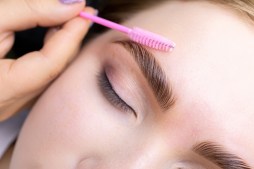Achieving a Professional Look: Makeup Application Techniques You Need to Know
When it comes to applying makeup, there’s no denying that achieving a professional look can be quite challenging. However, with the right techniques and a little practice, you can elevate your makeup game and achieve that flawless finish you’ve always dreamed of. In this article, we will explore some essential makeup application techniques that will help you apply makeup like a pro.
Prepping the Canvas
Before diving into the world of professional makeup application, it’s crucial to start with a clean and well-prepped canvas. This means thoroughly cleansing your face and applying moisturizer suitable for your skin type. Additionally, using a primer can create a smooth surface for foundation application and help your makeup last longer.

Next, focus on creating an even base by choosing the right foundation shade for your skin tone. Opt for formulas that provide the desired coverage while still allowing your skin to breathe. Remember to blend well using a brush or sponge to ensure seamless results.
Mastering Eye Makeup
The eyes are often considered the focal point of any makeup look, so mastering eye makeup techniques is essential for achieving a professional finish. Start by grooming your eyebrows using an eyebrow pencil or powder that matches their natural color. Fill in any sparse areas and shape them to frame your face perfectly.
When it comes to eyeshadow application, remember the golden rule of blending. Begin by applying a neutral shade all over the lid as your base color. Then, gradually build up darker shades in the crease area for depth and dimension. Blend meticulously between each step to avoid harsh lines.
To add more definition, don’t forget about eyeliner. Whether you prefer liquid or pencil eyeliner, aim for precise lines close to the lash line for an enhanced eye shape. Finish off with mascara or false lashes to complete your eye look.
Perfecting Complexion Techniques
Achieving a flawless complexion is the key to a professional-looking makeup application. Start by using concealer to hide any blemishes, dark circles, or redness. Make sure to choose a shade that matches your skin tone and blend it seamlessly into your foundation.
Contouring and highlighting can also take your makeup game to the next level. Use a matte bronzer to contour areas such as the hollows of your cheeks, temples, and jawline for added definition. Then, apply a highlighter on the high points of your face like the cheekbones, bridge of the nose, and cupid’s bow for a luminous glow.
Lastly, don’t forget about blush. A pop of color on the cheeks can instantly brighten up your complexion. Choose a shade that complements your skin tone and apply it on the apples of your cheeks using light strokes.
Lips that Wow
No makeup look is complete without attention to the lips. To achieve a professional finish, start by exfoliating your lips with a gentle scrub to remove any dry or flaky skin. Apply lip balm afterward to hydrate and prep them for color application.
When it comes to lipstick or lip gloss, choose shades that suit both your skin tone and the occasion. For precise application, use a lip brush or directly apply from the tube if you prefer. To prevent bleeding or feathering, consider using a lip liner in a matching shade before applying lipstick.
To enhance longevity, blot excess product with tissue paper and reapply another layer for intense pigmentation if desired. And voila. Your professionally applied makeup look is complete.
In conclusion, achieving a professional look through makeup application requires practice and attention to detail. By prepping your canvas correctly, mastering eye makeup techniques, perfecting complexion techniques, and giving attention to lips that wow – you’ll be well on your way to achieving flawless results every time you apply makeup. So go ahead, experiment, and have fun while honing your skills to achieve that professional look you’ve always desired.
This text was generated using a large language model, and select text has been reviewed and moderated for purposes such as readability.





